Cats hide stress better than they should.
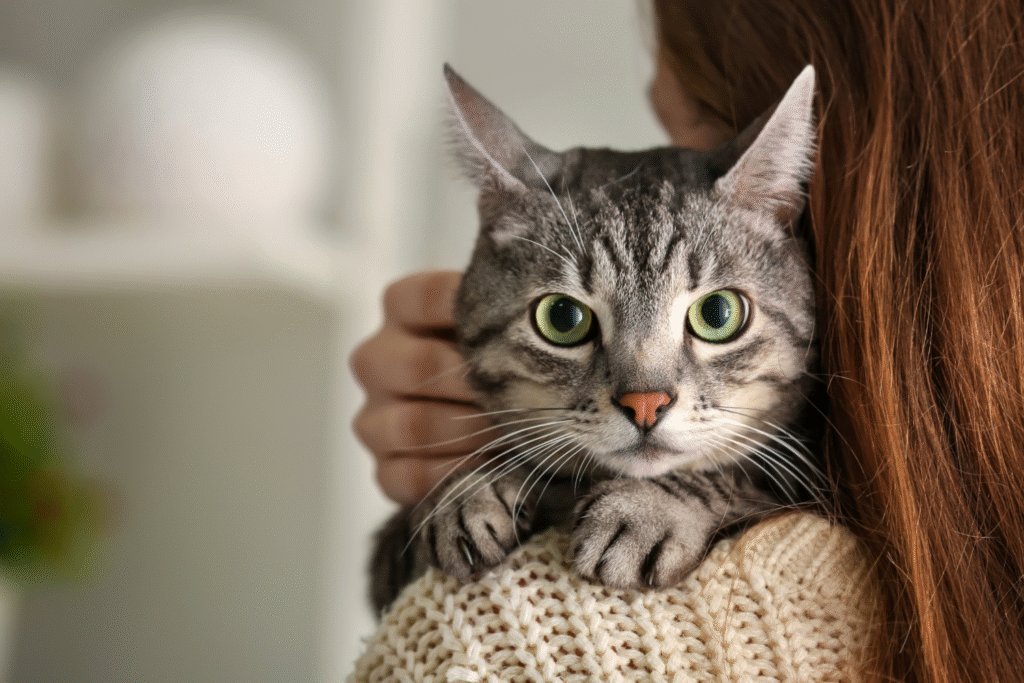
Cats may look calm as they nap on the windowsill, but stress can simmer beneath that quiet exterior for months before it becomes chronic anxiety. Subtle cues—like grooming more than usual or hiding under furniture—are your cat’s quiet language for “something’s wrong.” Studies now show that prolonged stress doesn’t just change feline behavior, it can physically alter their immune and digestive systems. Understanding these warning signs early can prevent lifelong anxiety and keep your cat’s mental and physical health stable.
1. Grooming that crosses the line into obsession.
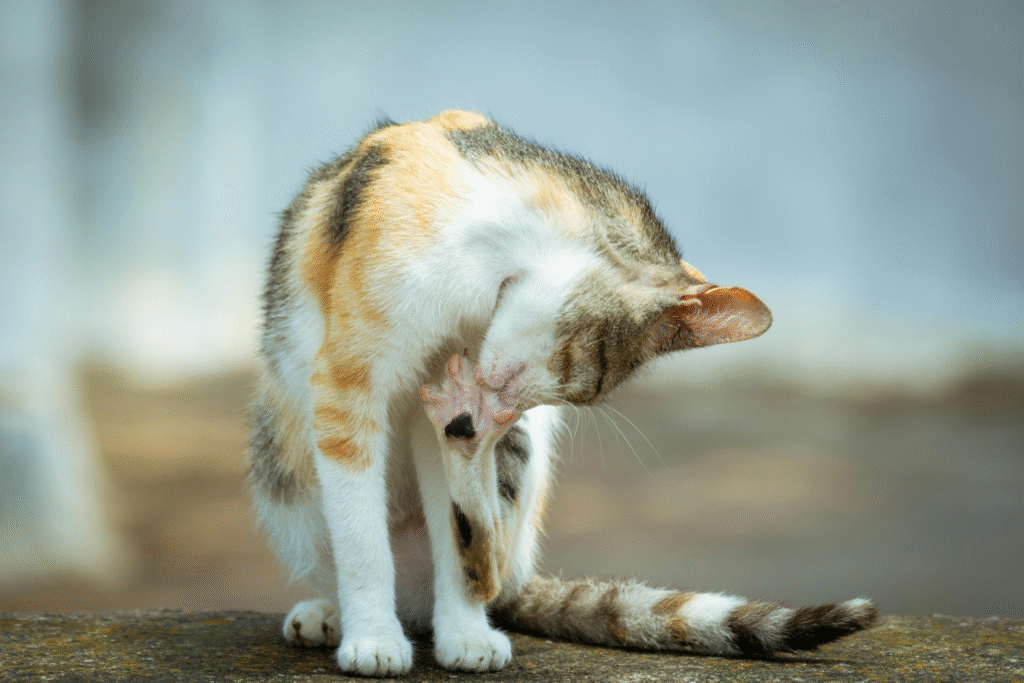
When grooming turns from a daily ritual into a nonstop cycle, stress may be the culprit. According to the Cornell Feline Health Center, excessive grooming often stems from anxiety or environmental changes. Over time, cats can lick away fur, leaving bald spots along their bellies or legs. It’s their attempt to soothe themselves through repetitive motion. Once this habit locks in, it can become compulsive, making recovery harder without intervention. Spotting this early gives your cat a chance to break the stress loop before it spirals into chronic anxiety.
2. A sudden retreat from favorite people or places.
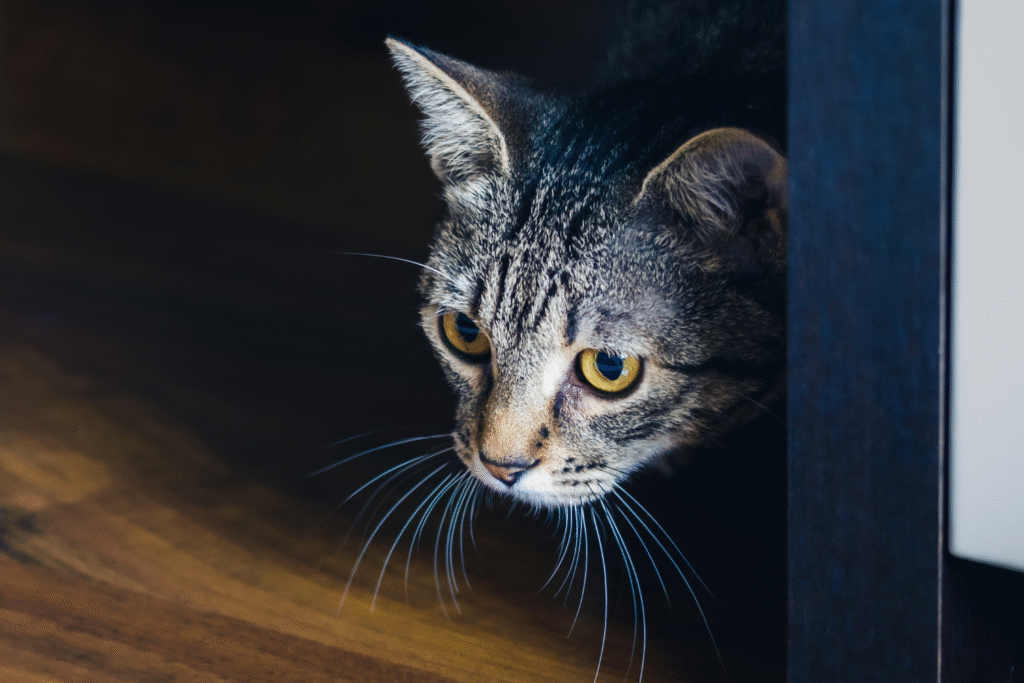
Some cats vanish to the back of the closet when they’re overwhelmed, trading social time for solitude. As stated by the American Association of Feline Practitioners, withdrawal is one of the first and most consistent indicators of stress-related anxiety. It might follow a move, a new pet, or even subtle tension in the home. Isolation becomes a self-protective behavior, but prolonged hiding can reshape their comfort boundaries long-term. By noticing the retreat before it becomes routine, owners can gently rebuild trust through consistency, quiet reassurance, and space.
3. Changes in appetite that don’t match their mood.
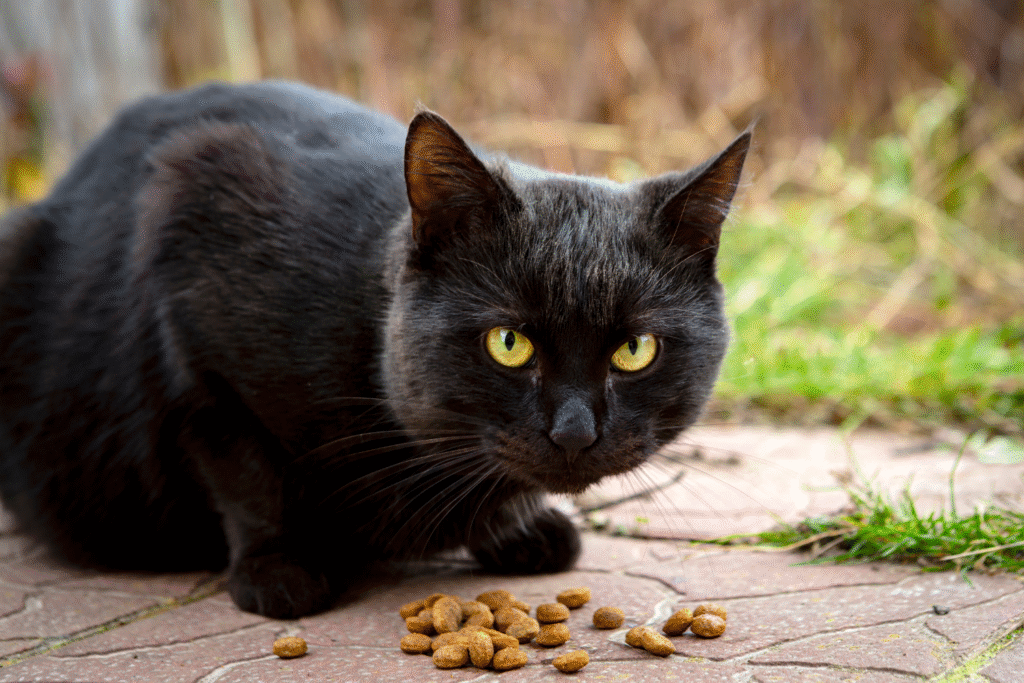
Cats rarely skip a meal without reason. When food suddenly loses its appeal, or a cat starts overeating, stress may be disrupting the brain’s hunger signals. As reported by the Journal of Feline Medicine and Surgery, stress-induced changes in appetite can precede gastrointestinal issues and behavioral anxiety. Some cats comfort eat, others stop altogether. Both patterns chip away at their stability. The key is recognizing the mismatch: a cat that’s otherwise playful but not eating, or restless but constantly hungry. Each is the body’s way of signaling inner imbalance before it turns chronic.
4. Excessive vocalizing that feels out of character.

When a quiet cat starts meowing at all hours, or a chatty one won’t stop pacing and calling out, their nervous system might be working overtime. Stress often heightens vocal expression because cats can’t find other outlets for emotional release. They may cry near the door, the litter box, or the food bowl, but none of those are the real problem. It’s anxiety trying to communicate through sound. Listening to these behavioral “tells” can reveal more than any vet visit ever could.
5. Sudden litter box avoidance without a medical cause.

A stressed cat might start urinating outside the litter box even if their health is fine. This isn’t rebellion—it’s displacement behavior tied to emotional overwhelm. Changes in scent, noise, or location can throw off their sense of safety. Once a cat feels unsafe using the box, that association can linger for months. The fix isn’t punishment but restoring confidence: a quieter spot, more litter boxes, or feline pheromone diffusers to calm their nerves before anxiety becomes ingrained.
6. Tail twitching and tense postures that don’t relax.

Body language often reveals stress long before meowing or scratching begins. A rigid tail tip flick, stiff legs, or slightly crouched stance signals internal unease. When a cat’s nervous system stays on alert too long, it rewires how they process daily experiences. Over time, these tiny moments of tension become chronic muscle patterns. Owners who learn to read that physical vocabulary can intervene before anxiety becomes their cat’s new baseline.
7. Overreacting to sounds or sudden movements.
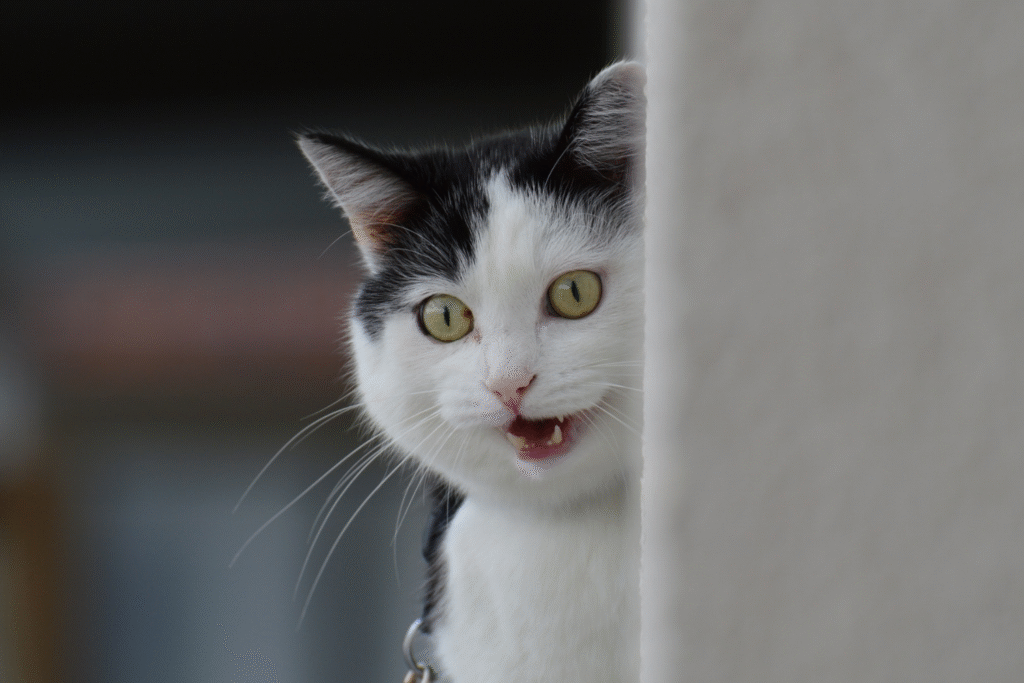
If your cat startles at every noise, flinches when touched, or dashes from harmless movements, stress has likely turned their environment into a minefield. Hypervigilance is exhausting, yet many cats live that way for years after a stressful event. Reducing stimulation—soft music, predictable feeding times, stable furniture placement—helps re-teach the nervous system that the world is safe again. Calm isn’t just emotional; it’s physiological retraining.
8. Sleeping too much or too little for no reason.

Cats already sleep a lot, but stress can distort their rhythm. Some withdraw into excessive rest, others become restless and wander all night. Both indicate imbalance in cortisol cycles, the same hormone humans release under pressure. Chronic sleep disruption leads to irritability and reduced immunity. Over time, cats may grow more reactive or detached. Adjusting lighting, providing hiding spots, and reinforcing daily structure can slowly recalibrate that sleep pattern back to health.
9. Aggression that surfaces without clear provocation.

Stress can turn even the gentlest cat unpredictable. A sudden swipe or hiss at familiar people often comes from fear, not malice. Prolonged tension heightens sensitivity to touch, smell, and territory. This reaction is their body’s misguided attempt at control when their world feels unstable. Identifying triggers—new pets, loud appliances, or even perfume changes—helps prevent aggression from solidifying into anxiety-linked defensiveness.
10. Overly focused staring or repetitive pacing.
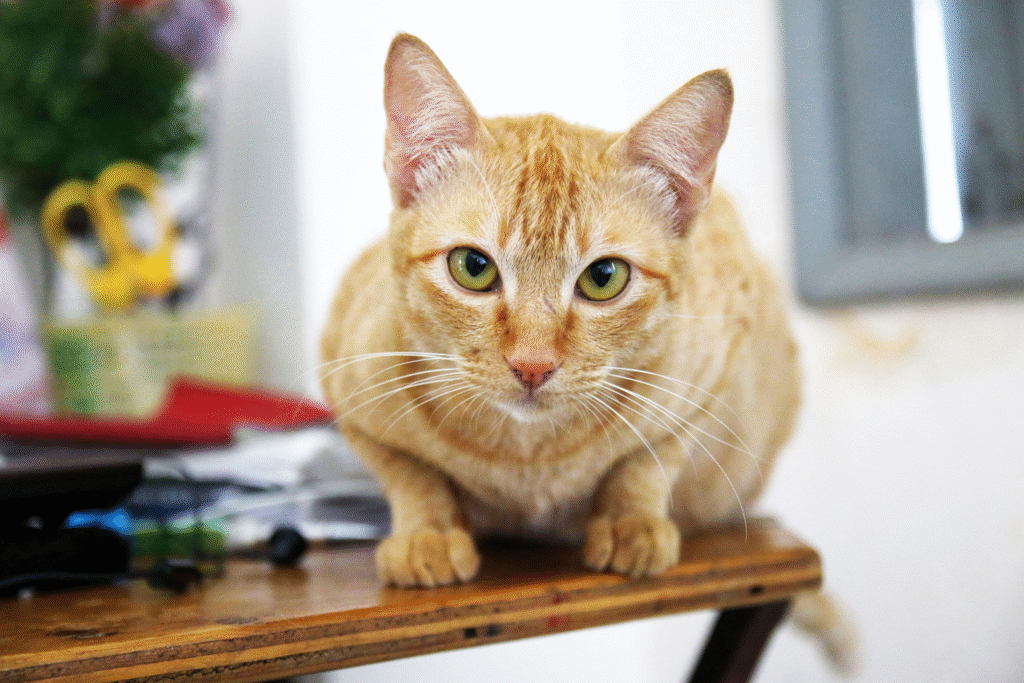
When a cat locks eyes on nothing or circles the same space, it’s rarely boredom. These trance-like behaviors are coping mechanisms for unresolved stress. It’s the feline version of overthinking, a self-soothing loop when they can’t resolve internal discomfort. Redirecting with toys or play interrupts the cycle, teaching the brain to find calm through engagement rather than fixation.
11. Marking territory more than usual.

Spraying or scratching excessively can signal emotional instability, not dominance. It’s their way of layering scent for reassurance in a world that feels unpredictable. Once anxiety fuels this behavior, it can escalate quickly. Restoring stability means cleaning thoroughly, but also reshaping their sense of safety. The goal isn’t to punish but to make them feel like their home doesn’t need guarding from invisible threats.
12. Panting or drooling outside normal activity.

Cats don’t pant the way dogs do. If you see open-mouth breathing, drool, or trembling, their nervous system may be under acute strain. This can happen after vet visits, travel, or loud disturbances. Frequent episodes suggest ongoing stress that’s beginning to tax their cardiovascular system. Cooling the environment, reducing overstimulation, and offering quiet recovery space can lower their adrenaline and prevent chronic anxiety from setting in.
13. Clinginess that feels more desperate than affectionate.

A cat glued to your side isn’t always showing love—it may be clinging out of fear. When stress turns into long-term anxiety, attachment becomes survival behavior. The moment you stand up, they follow. It’s their nervous system begging for stability. Gradually teaching independence with short separations and calm reassurances can help retrain that anxious bond. And once their confidence rebuilds, their affection will shift back to something genuine, not desperate.
